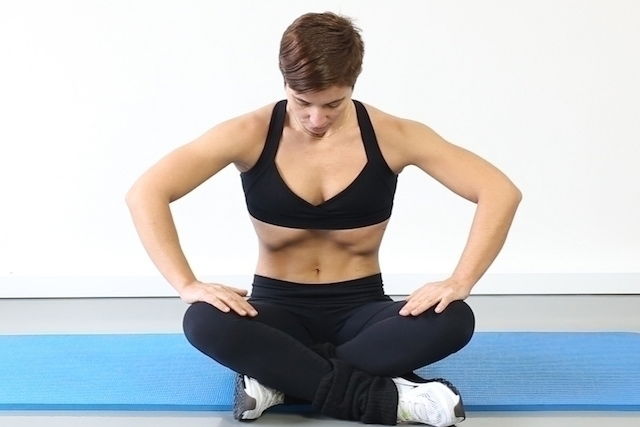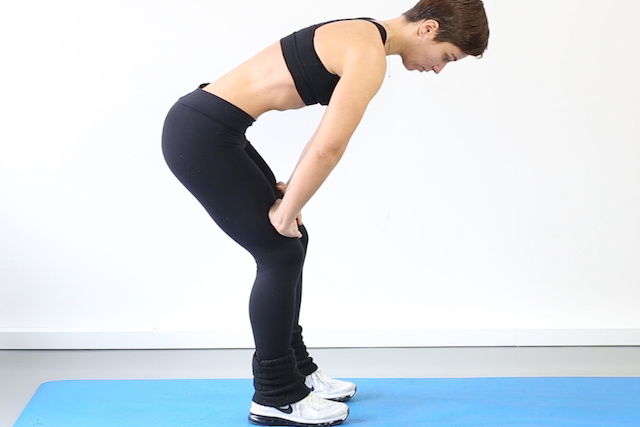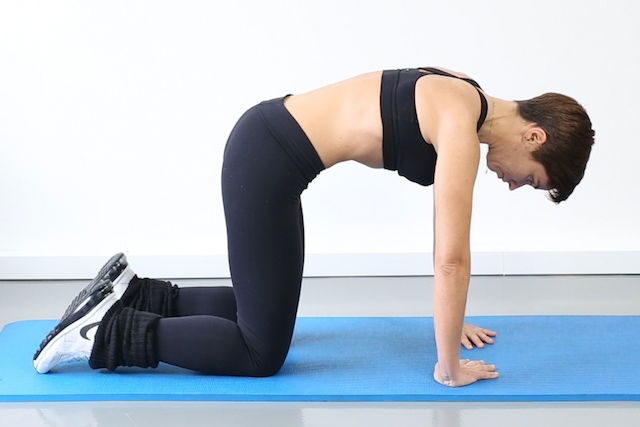Hypopressive exercises can help to tone your abs by increasing pressure within the abdomen through a specific breathing technique.
These exercises can also be beneficial for managing urinary and fecal incontinence, improve posture and optimize intestinal function.As these exercises do not put pressure on the spine, they can even be performed by those with a herniated disc or other spinal condition.
How to perform
See the steps below to learn how to perform hypopressive breathing:
- Inhale normally and then exhale until your lungs are completely empty.
- Contract the abdomen, and suck your belly "inwards", at the same time as you exhale.
- Hold the abdominal contraction for 10 to 20 seconds without breathing. The contraction time can be gradually increased over time.
- Fill your lungs with air and relax your abdomen completely, returning to normal breathing;
- Repeat all steps for 5 to 10 minutes.
This type of exercise should be started slowly. Ideally, you should start by doing the exercises lying down, then progress to the sitting position and, finally, you can perform these in a plank position.
Ways to perform hypopressive exercises
Hypopressive exercises can be performed in different positions:
Exercise 1: Lying down

Lay on your back with your legs bent and your arms at your sides, and follow the instructions above. To start, do 3 repetitions of this exercise.
Exercise 2: Lying with legs straight

Lie on your back with your legs flat and your arms stretched behind you, one on top of the other as in the photo. Inhale deeply and when you exhale, “pull” your abdomen and pelvic muscles in, holding your breath for as long as possible.
Exercise 3: Sitting

Sit in a chair with your feet flat on the ground, or on the floor with their legs crossed. Exhale completely and then 'suck' your belly, holding your breath for as long as you can.
Exercise 4: Leaning forward

In a standing position, lean your body forward, bending your knees slightly. Take a deep breath and when you exhale, 'pull' your abdomen and pelvic muscles in. Hold your breath for as long as you can.
Exercise 5: 4-point position

In an all-fours position, release all the air from your lungs and suck your belly in as much as you can. Hold your breath for as long as you can.
Exercise 6: Standing position
Standing, you should try to keep your spine as straight as possible and your palms facing forward, then release the air completely and then “pull in your belly” completely, remaining without breathing for as long as possible.
There are still other positions that can be adopted to do this exercise, such as in a plank position or standing on one foot. Whenever you are going to do a series of hypopressive exercises, you should try to change the positions as it is normal for the person to find it easier to maintain the contraction for longer in one position than in another. The best way to know which positions hold the contraction most effectively is to test each one.
Benefits of hypopressive exercises
The main health benefits of hypopressive abdominals are:
- Strengthening back muscles by reducing abdominal pressure and decompressing the vertebrae, which can relieve back pain
- Preventing urinary or fecal incontinence and uterine prolapse
- Prevents the formation of hernias
- Improving sexual performance, as it can increase blood flow to the lower body
Furthermore, performing hypopressive exercises also help to improve posture and balance, as it promotes core strength and helps with spinal alignment.
Do hypopressive exercise help with weight loss?
To lose weight with these types of exercises, you need to adapt your diet accordingly. You should reduce your intake of foods that are rich in fat, sugar and calories and also expend more energy by performing other fat-burning exercises, like walking, running, cycling or rollerblading.
This is because hypopressive exercises does not burn a lot of calories, and therefore is not effective in burning fat. However, these abdominal exercises are excellent for defining and toning the abdomen and for leaving your belly firm.






























